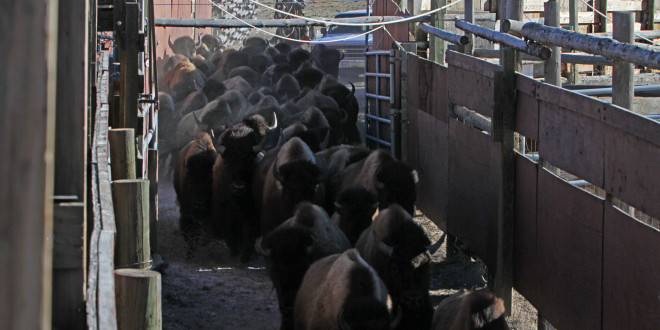The Montana Stockgrowers Association (MSGA) has come out against a proposed Yellowstone bison quarantine program.
More specifically, the MSGA is drafting formal comments in response to the Environmental Assessment prepared by Yellowstone National Park highlighting possible quarantine options. Further, they are calling for a full Environmental Impact Study to be done on a Fort Peck facility.
“The MSGA has determined that the EA is incomplete as it does not include factual cost estimates, scientific rigor or adequate disease testing,” the organization said in a press release. “It fails to include the costs that would be associated with the facility, the capacity of the facility or where funding would come from. These financial implications should be studied further to determine feasibility.”
At the forefront of the MSGA’s concerns, however, is fear of brucellosis and possible losses that could be incurred should it somehow infect Montanan cattle. From the MSGA press release:
The disease, brucellosis, remains a threat to cattle producers in Montana. The EA only requires the recipient of the bison to test them within 30 days of arriving at the facility. Following the initial test, it is only recommended the animals be tested every 30-45 days. A previous quarantine study has shown that 17% of the animals that initially tested negative for brucellosis converted to positive. This lack of required disease testing could prove problematic as it puts Montana at risk for a spread of brucellosis, which is currently confined to the Greater Yellowstone Area.
With significant risks left unaddressed by the EA, the MSGA believes that an EIS would be in the best interest of Montana and help address unanswered questions. MSGA will be submitting formal comments as well as requesting the full Environmental Impact Study that is necessary to fully study the effects of this facility.
We previously reported on the proposed bison quarantine program, which (if certified) would establish a facility either in the Park or on the Fort Peck Reservation in northeastern Montana. Currently, you can still comment on the bison quarantine program from now until midnight MDT February 15, 2016.
The MSGA’s announcement comes on the heels of a public meeting held at the Yellowstone Association headquarters in Gardiner, Montana.
EA vs EIS
The chief difference between an EA and EIS is time. Statements require more work than Assessments; generally, EIS are prepared in cases where Assessments show there will be a significant impact on the human environment. Several aspects of the original quarantine EA showed expanding bison herds on the Fort Peck reservation would have “no significant impact” on the region’s historical/cultural resources. The report acknowledged the possibility of Brucella bacteria transferring from bison to people, but added there’s no major danger of infection, regardless of where the bison are quarantined.
The MSGA is hoping an EIS uncovers risks unacknowledged in the original EA. Of course, even if Yellowstone and/or the National Park Service prepares a bison quarantine EIS, it could change nothing, especially when public comment is weighed against the MSGA’s request.
 Yellowstone Insider Your Complete Guide to America's First National Park
Yellowstone Insider Your Complete Guide to America's First National Park





